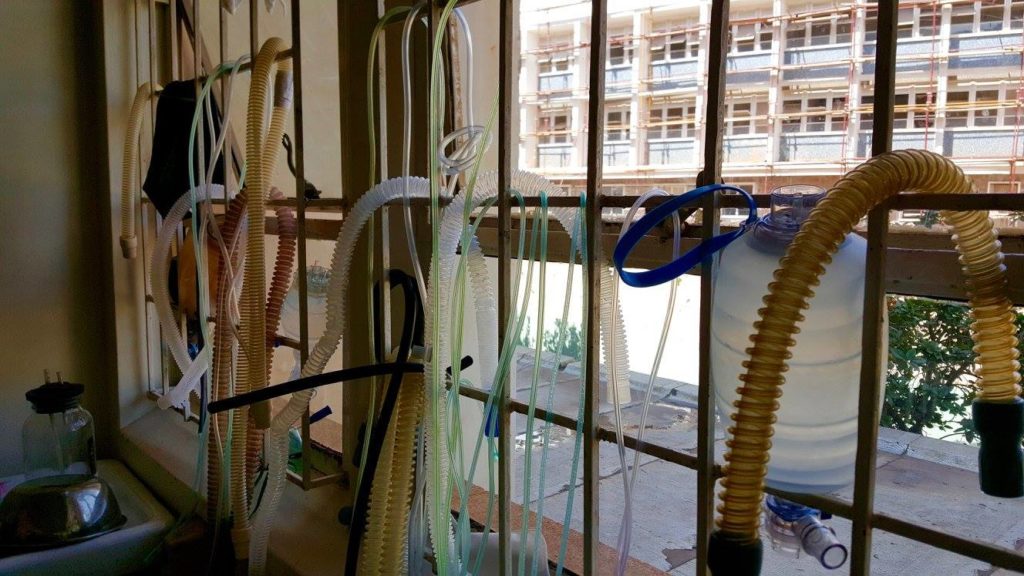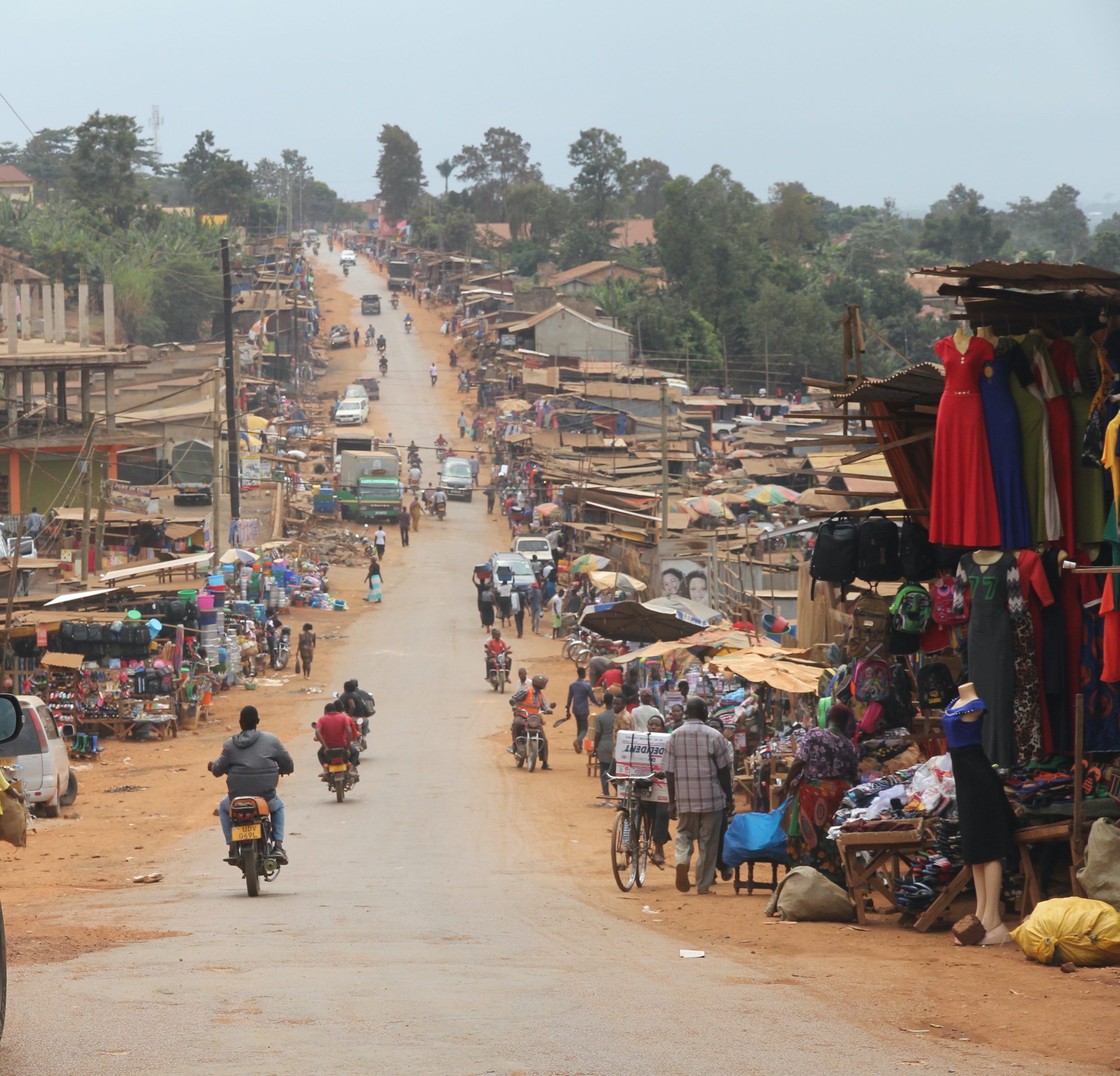Published: 06/18/2021
Cardiology is often viewed as a development problem rather than a healthcare problem, but Dr. Chang believes we can be doing much more to support heart health in low- and middle-income countries.
By Lucas Oliver Oswald.
At the time of writing this, Dr. Andrew Chang is about 2 weeks from finishing a clinical fellowship in Cardiology at Stanford Medicine, “After which, I guess, I’m headed for the big leagues!” he joked recently in an interview.

For a fellow, however, Dr. Chang is already making “big league” level waves in cardiovascular Global Health. While at Stanford, Dr. Chang has been able to direct much of his efforts to a field that has been largely neglected when compared to other Global Health topics.
Much of this he attributes to Stanford’s emphasis on research during medical education and training, a focus he has greatly enjoyed through a long stint here. Having completed medical school, residency, and a master’s program at Stanford, and now nearing completion of a cardiology fellowship and a PhD, Dr. Chang exemplifies Global Health at Stanford. By utilizing the university’s resources to move the needle for cardiology in low- and middle-income countries, he is also a testament to exactly the kind of innovation in the field Stanford hopes to cultivate.
But, as any doctor knows, it takes more than just resources to seriously pursue any kind of interest during your training years — it requires immense interest and motivation.
“It’s got to be something that you’re passionate about,” Dr. Chang told me. “You’re post-24-hour call shift and then you have a cup of coffee, maybe a nap, and then you say, ‘Well, let’s run the statistics one more time before I go to bed.’ I feel lucky that I think the subject material I study is exciting and urgent enough to warrant working on after a long day in the hospital.”
I sat down with Dr. Chang recently to discuss why progress in cardiology is lacking in the global arena, what can be done to improve treatment quality, and how this field intersects with the health of our climate and ecosystems.
In comparison to other health concerns, cardiology has been largely neglected in Global Health efforts. Why is this?
The obvious reason is that investment in cardiology often doesn’t appear to yield eye-catching short-term health outcomes as much investment in infectious epidemics or, say, maternal and child health, areas where we have thus made huge strides. However, I think the root of the issue is more complex.

A lot of it has to do with this myth that heart disease is simply a demographic transition issue. Because cardiovascular health is so associated with lifestyle — things like obesity, smoking, and exercise — people believe that these things will be solved when low- and middle-income countries industrialize and meet high-income country economic and behavioral standards, which is absolutely not the case. Many such countries have actually made significant strides in the economic demographic transition, and yet outcomes for certain endemic heart diseases like rheumatic heart disease have barely improved since 1990.
Much of your work focuses on rheumatic heart disease. Can you explain what it is and why it is still an issue in low- and middle-income countries?
Rheumatic heart disease occurs when infection with strep throat leads to an inflammatory state in the body and specifically the heart. You may know acute rheumatic fever by the name Scarlet Fever. When left untreated, that inflammation can actually destroy the heart valves, usually in a recurring cycle where every time you get strep throat, if you don’t treat it with antibiotics, it keeps eating away at the valves and eventually leads to heart failure.

Rheumatic heart disease used to ravage the entire world. Today, it’s no longer seen in places like the United States where there is widespread use of antibiotics. But in lower income regions, places Sub-Saharan Africa, it is still a major problem and responsible for up to a third of all heart failure cases. There are 33 million people living with rheumatic heart disease in the world—for comparison, there are 37 million living with HIV/AIDS.
What are the problems with treating rheumatic heart disease in low-income settings and what have you learned from your research about how we can improve treatment?
Treatment is actually widely available — heart failure from this condition is usually due to neglected preventative care. Given the limitations in funding and resources for rheumatic heart diseases, we have had to get creative in developing tactics to address it. One such approach has been to borrow techniques and tools from other Global Health strategies such as for controlling HIV.
To prevent the progression of rheumatic heart disease, patients need regular penicillin injection to limit the damage from recurrent infections. Our research group noticed that this was very similar to the way people living with HIV have to stay on suppressive antiviral medications. HIV patients dropping off of treatment is well studied — one common framework used to quantify this is called the “Cascade of Care,” in which we look at patient drop off at each level of care, from diagnosis, to being prescribed medications, to those who are in treatment but are lost to regular healthcare.
Adapting this “Cascade of Care” model from HIV, we can see where people fall off in each stage of rheumatic heart disease care, then target retention at those steps. In an ongoing study in Uganda, we have found that most of the patients are actually quite adherent to penicillin once prescribed, but when people are lost to follow up, say from having to travel long distances to clinics from very far away, that is where we’re really dropping the ball and these patients are actually dying.
Are there social or cultural components at play when people don’t get treatment in these settings?

Yes, definitely. In Uganda, many of the women that we interviewed for a separate research study expressed that the value of a woman in Ugandan society is judged by their fertility, or how many children they can have. And so, they actually reported experiencing a tremendous amount of stigma around heart disease, because advanced valvular disorders and heart failure can prevent women from safely giving birth in low-resource settings. A lot of them are hiding their rheumatic heart disease diagnoses from friends and family, and what’s really heartbreaking is that many of them actually said that they would prefer to have HIV to having heart disease, because HIV doesn’t limit fertility.
We are also conducting research on social barriers to rheumatic heart disease care in Sudan, and one really interesting factor we found there is that patients’ perception of healthcare quality is a major factor in adherence. The prestige and perceived eminence of the hospital, including facility cleanliness and amenities, played a significant role — patient drop off was associated with the perception that their point of care was low-quality.
You recently published a commentary paper on the intersection of cardiovascular disease and planetary health. Why are you interested in this cross section?
On a personal level, the recent California wildfires that we lived through piqued my interest. I did some more reading on the subject, and it turns out that during California’s 2015-2017 wildfire seasons, there was a big spike in heart attacks and sudden cardiac deaths. Unsurprisingly, it turns out that your heart doesn’t function very well when your lungs are full of ash and particulate matter.

I started to look beyond California though and saw research showing similar events are happening around the world. For example, seasonal haze events occur in Indonesia every year that are directly related to human activity, where people drain peat bogs for agricultural activities. Those peat bogs are being slashed and burned, producing dangerous air pollution that has severe cardiovascular consequences for nearby populations. The ironic part is that much of that land is being cleared for palm oil production, which in turn also causes heart conditions through the processed foods that it is used in. So in more ways than one, what we are doing to our planet is directly impacting our cardiovascular health.
In the article I was trying to address two things. First, I wanted to get more cardiologists to think about planetary health and advocate for environmental health efforts. But more broadly, I wanted to introduce readers to the concept of planetary health compared to that of climate change. Climate change is of course a huge existential threat, but there are ongoing activities affecting our environment bigger than climate change that have worldwide health consequences. We as doctors need to pay attention to those and advocate for solutions now, before it’s too late.
Header photo by Antoine Plüss on Unsplash.

